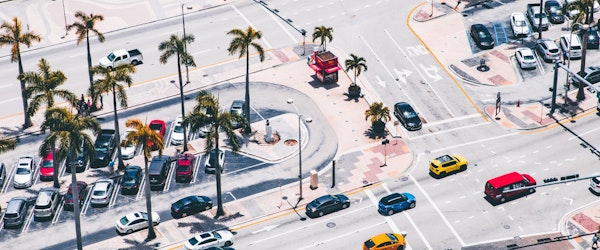
Why Scale Matters In Accident Reconstruction
Wednesday, October 21st, 2020 Aaron (Al) Duncan II The Warren GroupWhen it comes to diagramming a crash scene, there are several methods to complete the task. Forensic Mapping, (locating, positioning, and documenting the evidence of a collision scene to scale) is essential to having the answers to the questions “Who, What, Where, When, and Why”. Photographs do a great job showing what the investigators saw post collision; yet they lack scale and the ability to describe pre-collision movement. Having a computer aided diagram (CAD) of the collision scene goes much further than the pictures can; here is why.
A scale diagram gives the full overview of a collision scene from either a 2D or 3D point of view. Being able to see how things lined up, how they came together and how they parted helps explain the events within a crash. When a scene can be viewed from top down or any angle, that helps relay the facts. The investigator, judge, or jury will get a visual idea of what was happening up to, at, and after impact. Using properly documented physical evidence in conjunction with the layout of the roadway in the area helps to tell the story from approach to final rest. Photographs limit the viewer to only seeing what was there in the aftermath and can also skew the perspective as to the position or distance captured within the frame.
Using forensic mapping technology (a laser scanner, drone, total station, or some other method of gathering data points for evidence) reduces time and adds detail that hand drawings lack. Gathering data by hand with a 100-foot tape measure takes time and being in the roadway is dangerous. The use of the advanced technology reduces the time needed and simplifies the task of capturing the data as well as reduces the threat to an investigator. To complete a CAD scale diagram, high-tech equipment is used to plot points throughout the crash site. For example, using the Sokkia Total Station relevant points are mapped and coded by the investigator while the station relates each of them to its location. These points may be roadway lines, utility poles, skid marks, or any other item that helps to detail the scene or explain the collision. By plotting and identifying each point, they can be brought into a computer program such as Faro Zone 3D and a scaled diagram can be completed. While a point was originally plotted from the station, measurements can be made from point-to-point or line-to-line. From the start to the finish of skids, or whatever distance, elevation, or even grade you are trying to examine is available from the diagram. Now studies can be completed accurately and efficiently. The desired perspective can be produced to scale.
Once in the diagramming software, satellite maps may be imported into the mapped scene to help relate the collision data to the crash location. This makes the location more recognizable to the viewer by identifying buildings and other landscape details that are too vast to map. With the image being to scale and known measurements being taken by the investigator to relate to the satellite map, it is now possible to measure beyond the original mapped points. Time-distance calculations can be worked showing longer distances and, unlike a photograph, you can better relate distances and objects that relate to the investigation. Technology has advanced and improved the way collision scenes are documented. When a crash scene is mapped the collected data can be used to explain step by step what went on in a collision. The events can be shown stage by stage to explain how the collision happened, and the software allows answers to questions that may not have been thought about when the scene was being photographed or mapped. Investing in a scale diagram can reflect the happenings within a crash, showing the events of the collision as they unfolded.
Aaron (Al) Duncan II, ACTAR, is a senior vehicle reconstructionist with Warren. He can be reached at 803-732-6600, and aduncan@warrenforensics.com. Reprinted with permission from Warren Forensic Engineers & Consulting.
